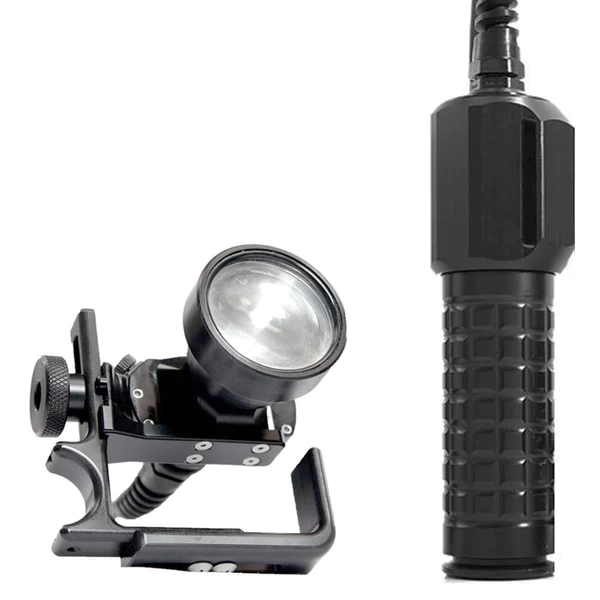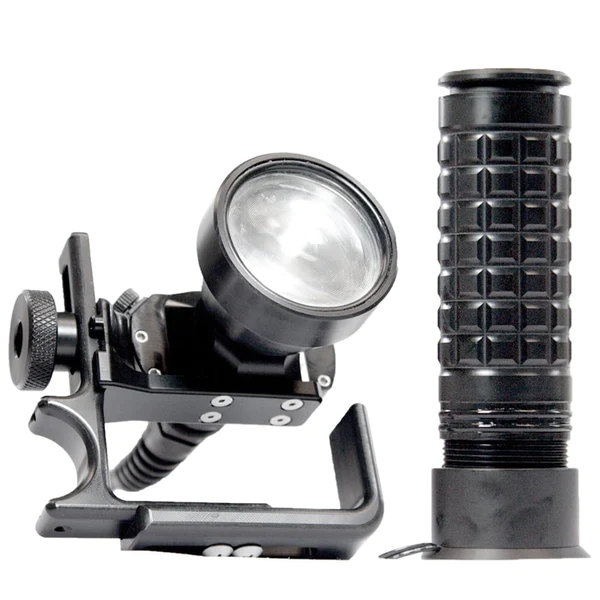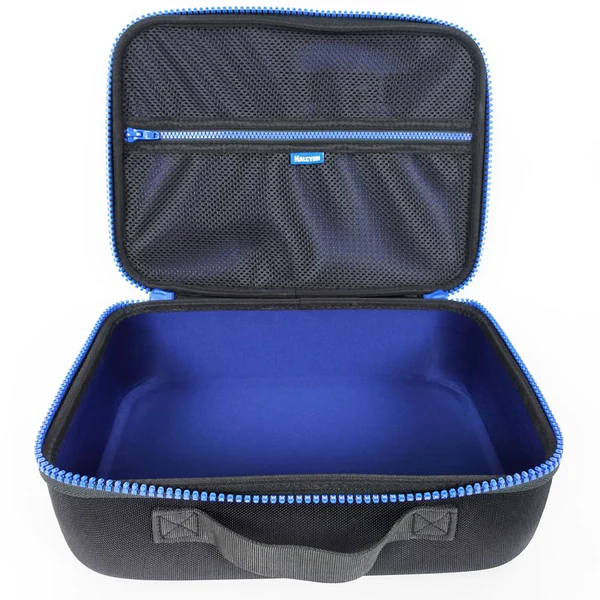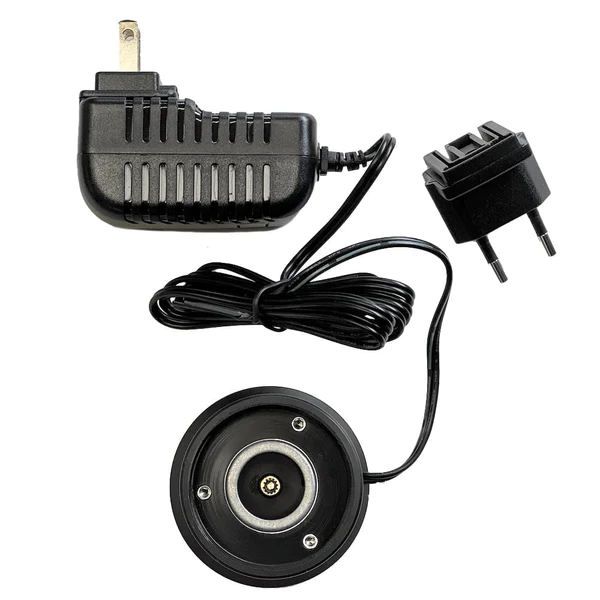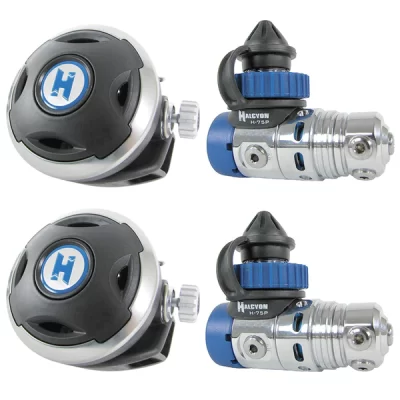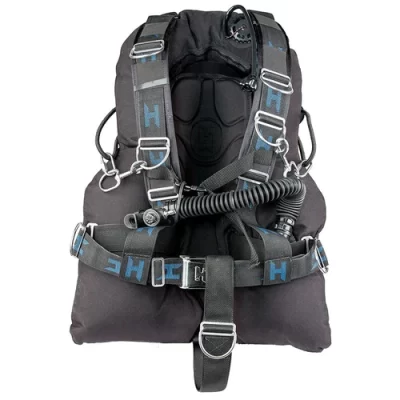The Halcyon Flare EXP Light is the fixed-focus beam version of Halcyon Focus light in a compact housing.
The Flare EXP dive light with a standard cord is strong, dependable and priced to become your go to solution for your next primary light. It is powerful enough to lead an extreme cave dive… even on half power yet simple enough for a recreational reef dive.
3 phase (full, half, off) magnetic power switch. Isolated LED core and driver through 3 sealed compartments. Adjustable handle for easy use. Tiny footprint lightweight battery pack. Portable easy charger. Auto shut-down on low power. Overheat protection and plenty more…
Halcyon Flare EXP Light features
- Approx. 5 hours burn time on high and 10 hours on low
- 11,500 lux at 1m 1,700 lux at 3m on high power
- 300m depth rated
- Fixed Beam
- Integrated harness/belt loop
- High and low power setting
- Weight 1.3Kg
- Adjustable handle, folds on lens during transport
- Delrin canister, height 20cm
- 5amp LiOn battery
- Easy to charge on cradle
- Charger included
- Packaged in Voyager case
Halcyon Flare EXP Charger
Halcyon Flare EXP torches come with a compact and practical wall charger.
The total weight of the charger and charge point is 202g making it ideal for the travelling diver.
The class 2 battery charger works on 100-240V with an output of 12.6V (1.0A) and can be used worldwide.
All you need to do is unscrew the battery from the lamp head, connect the charger and screw the battery into the one-pin charge point. Wall chargers are supplied with the appropriate plug/adapter for the region you place your order.
Halcyon Measuring Diving Light
Halcyon prefers to describe diving lights using lux because this provides a gauge of intensity at a given distance, which is probably more relevant while diving or during signalling. Halcyon typically tests lux output at one, three, and five meters from the light source. These distances appear useful when evaluating intensity for general use and while signalling a dive buddy.
A lux measurement that is very close to the light source will be higher than a lux measurement recorded farther from the same light source because light diffuses as it gets farther from the source. Therefore, you can think of lumens as the amount of light available and lux as the lumens that are actually arriving at the intended target.

